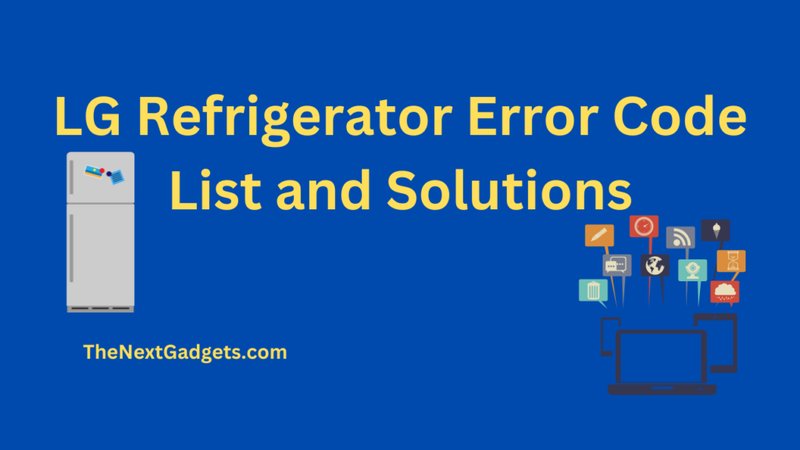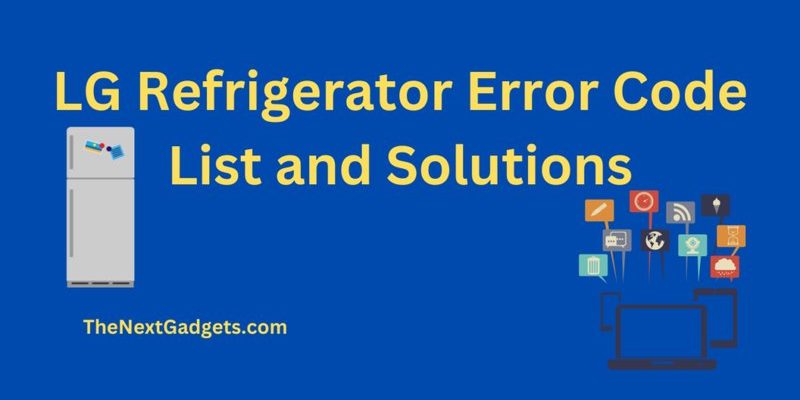
Error Code LE is something like your fridge waving a tiny red flag, saying, “Hey, I need a bit of attention here!” It doesn’t mean that your refrigerator is on the brink of disaster. Instead, it points to a specific issue related to the motor or the machine’s load. Think of it as your fridge getting a little overwhelmed—like when you’ve packed your car trunk too full, and it just can’t shut properly. In this article, we’ll dive into what triggers this error code, how it affects your fridge’s performance, and what steps you can take to fix it.
Understanding the Error Code LE
When your LG refrigerator throws an LE error, it’s pointing toward a problem related to the motor or the load. In simpler terms, it’s like when a washing machine gets stuck in the middle of a spin cycle because the load is unbalanced. The refrigerator’s motor is getting a similar vibe—it struggles to do its job, which is the reason you’re seeing that error code on display.
The motor in an LG refrigerator doesn’t just work solo; it’s part of a complex system that keeps everything ticking along smoothly, like gears in a watch. So, when this error code appears, it often implies that the motor senses it’s either overburdened or something is restricting it. It’s like having a balloon that you keep blowing air into but it just can’t expand because there’s a knot in it. Your fridge is hinting that something needs to be untangled or adjusted.
A common initial reaction might be to reset the fridge. This can sometimes clear the error temporarily. You can do this by unplugging the fridge for about 30 seconds and then plugging it back in. It’s like giving your fridge a quick, refreshing nap. However, if the error persists, it’s a sign that a more thorough investigation is needed.
Potential Culprits Behind the Error
1. Overloaded or Jammed Motor
One frequent reason behind the LE error is an overloaded motor. Imagine trying to run with a heavy backpack; eventually, your movement gets hindered, right? Similarly, when the fridge’s motor gets bogged down, it triggers the error. This can occur from too much debris or food particles getting into areas they shouldn’t be—like trying to close a suitcase that’s way overpacked.
If you suspect this might be the issue, consider cleaning around the motor area or checking if any frozen items are blocking the fan’s rotation. Gently moving items can sometimes relieve the motor’s stress, much like shedding a few pounds from that backpack so you can sprint again.
2. Faulty Motor or Wiring Issues
Another reason could be a malfunctioning motor or wiring. This situation is more technical, akin to when a car engine refuses to start due to a spark plug failure. The motor itself might need attention or replacement. In cases where the wiring has worn out or become loose, it can disrupt the electrical flow necessary for the motor to run smoothly.
If you’re handy with tools, you might consider checking the motor connections yourself, ensuring everything is intact and no wires are frayed. However, if this sounds too daunting, calling a professional technician is a wise move. They’ll be able to deduce whether a motor replacement is necessary, saving you time and potential headaches down the line.
3. Software Glitches or Sensor Problems
Sometimes, your fridge is trying to tell you it’s simply confused. Software glitches or sensor malfunctions can also prompt an LE code. It’s a bit like your phone getting stuck in a loop or apps crashing randomly—it doesn’t necessarily mean the device is broken, just that it’s having a momentary blip.
Updating the fridge’s software or checking for faulty sensors can often resolve these issues. You can usually find the latest software updates on LG’s official website, or reach out to their customer support for additional guidance. Keeping your appliance’s software up-to-date is just like refreshing your phone’s operating system—necessary for optimal performance and minimizing hiccups.
Preventing Future Error Code LE Occurrences
Routine Maintenance
The best way to avoid future LE errors is through regular maintenance, much like how regular oil changes keep your car running smoothly. Check and clean the motor area periodically and ensure there’s no frost buildup that might impede the fan.
Proper Usage
Don’t overstuff your fridge, as tempting as it may be. Allowing air to circulate freely can prevent unnecessary strain on the motor. Think of it like trying to do yoga in a closet—open spaces allow for more flexibility and ease of movement.
Professional Check-Ups
Lastly, consider scheduling routine professional check-ups, similar to a health check-up with your doctor. A technician can spot early warning signs and fix them before they escalate into more significant problems, saving you time, worry, and money.
In conclusion, while seeing an LE error code on your LG refrigerator can be concerning, understanding its common causes can empower you to handle the situation effectively. Whether it’s cleaning, checking the wiring, or maintaining a regular service schedule, these proactive steps can ensure your refrigerator stays in top shape, keeping your food fresh without any unexpected surprises.
